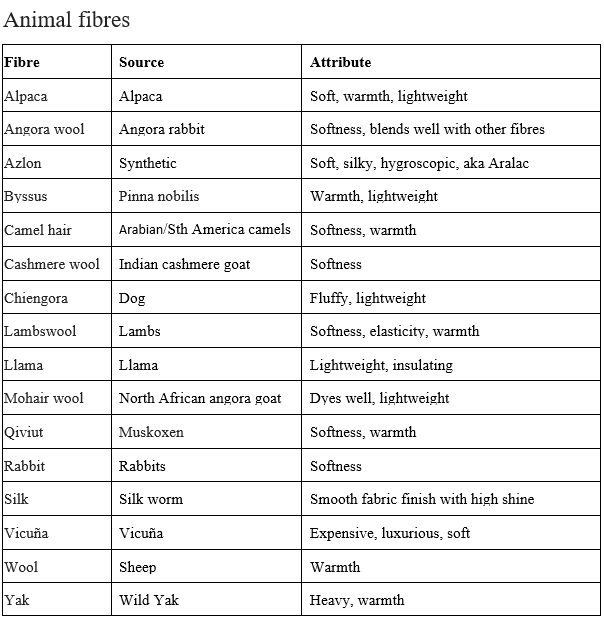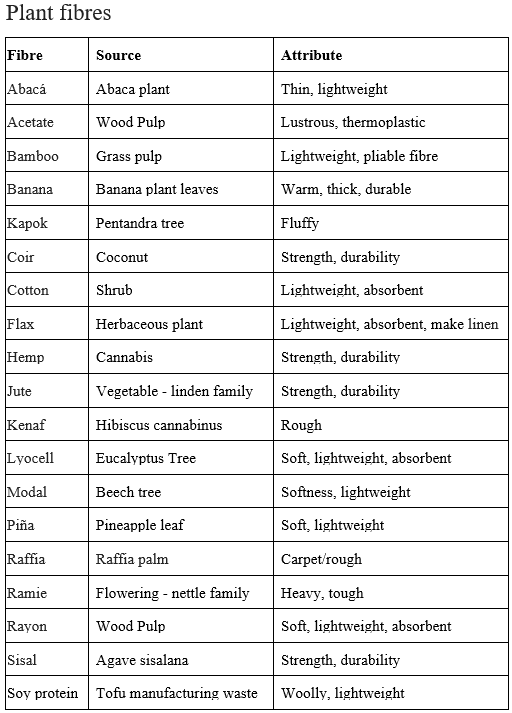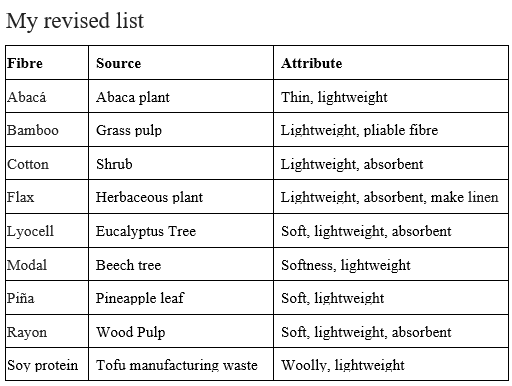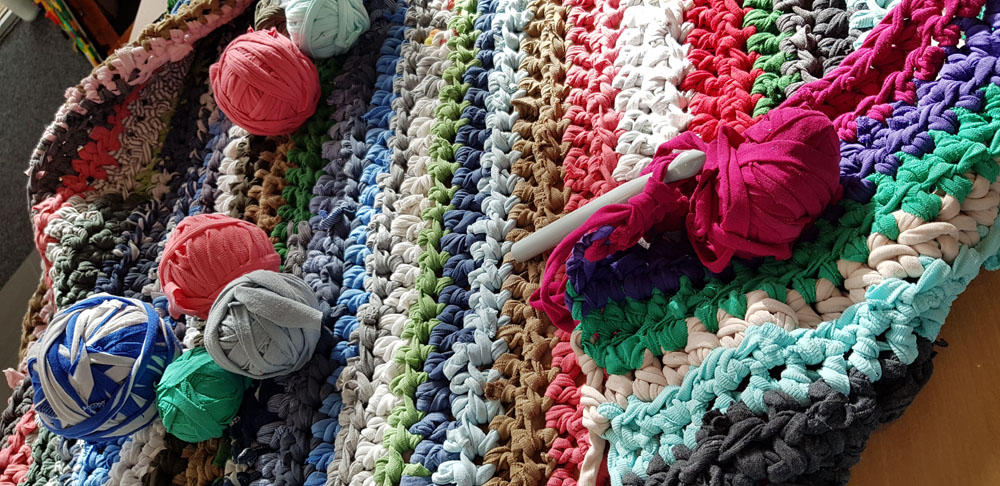AUGUST 3, 2019
I am keen on a natural burial where I can be buried in either a shroud or a coffin. Whatever I am cocooned in needs to be organic and biodegradable as per the SA Burial & Cremation Act 2013. For this post I am musing about my perfect shroud. So what does a girl wear to her natural burial grave?
In deciding what to wear I will be guided by my social ecological values which are based around kindness and connection with all. I also LOVE crocheting. So how cool would it be to crochet my own shroud that decomposes to compost quickly and looks beautiful!!
The perfect fibre would of course be paper. Paper garments for the grave was an arts based project in Burnie Tasmania in 2015. Ten Tasmanian paper artists designed and made paper garments following six months of conversations, exploring community, death, dying loss and grief. The exhibit that grabbed my attention was the crocheted shroud made of paper called Fibre of my Being by Pam Thorne. Another was Anzara Clark’s poignant bitter-sweet exhibit Christening Shroud made of paper in honour of her grandson, Cody, who died in-utero 10 years ago.
To be kind and connect with the earth, my accoutrements and adornments need to fall away from my body quickly and alchemise as fast as possible into compost. So beside paper, what materials does that include? Am thinking animal and plant fibres. I found comprehensive lists here which I have copied below.


My eye was drawn to the “attribute” column. mmmm thinking comfort attributes like warm, woolly, insulating, soft, rough, silky, fluffy are not really relevant to this decision from a practical viewpoint – my body won’t care if its cosy and warm in its eternal yet ephemeral wrap. However these attributes add to the aesthetic quality that is important to me – both for the sensual enjoyment of the making process and for the sensual feel for the people wrapping my body. The fibre needs to decompose quickly so attributes of strength, heavy, durability, tough, thick do not apply. So my choice is from the fibres with attributes of lightweight, absorbent and thin plus the comfort attributes. Am thinking that animal fibres would be more durable than plant fibres plus using animals would have suffered in some way to provide me their yarn. The attribute “absorbent” seems to jump out at me as important – in case my body is leaking anywhere an absorbent garment would be beneficial. So that leaves lightweight, absorbent plant fibers to choose from. My revised list looks like this:

When researching these fibres I came across the concept of sustainable vegan fibres – it turns out some plant fibres are more sustainable than others..
What is Abaca? Abaca is similar to banana leaf, native to the Philippines and is labour intensive to harvest and process. It is used mainly for paper production. Finding out about Abaca made me think I would like a fibre that is produced as close to where I live as possible to reduce distribution transport environmental costs.
I also then started thinking about the other production chain costs/impacts of growing, harvesting, manufacturing and end-of-life biodegradablity of each fibre.
It turns out modal, rayon, bamboo and lyocell are semi-synthetic fibers because they are not natural fibres produced straight from the plant, they go through an intensive chemical manufacturing process that breaks down the cellulose so it can be “regenerated” into a fiber from the original pulp. So they are now off my list.
Pina from pineapples is luxurious, expensive and is from the Philippines so that is also off the list.
Soy protein caught my interest: “The first use of soy in textiles was in the 1930s, when Henry Ford produced car-seat upholstery with a blend of soybean and sheep’s wool. Soy yarn fiber comes from the by-products of the tofu and soy-food industry. The useable soybean leftovers are called okara, which is in liquid form. Through a process called wet-spinning, soy proteins are extracted from the okara and dried. The dried proteins are then spun into yarn, either the dried soy protein by itself or with other fibers such as wool or cotton. The operation is eco-friendly and leaves little to no waste.” (source). I was unable to find any Australian made soy fibre so this fibre is also off my list as I cannot source it locally.
That leaves cotton and flax. Both of which are grown in Australia. The modern process has reduced the amount of water and chemicals needed during growing, harvesting and processing stages. Here is a list of Australian companies that sell Australian yarn, but not all of them sell organic it seems.
- Bendigo Woollen Mill
- Full Circle Fibres
- Great Ocean Road Woolen Mill
- Thread Collective
- Skein sisters
Biodegradable Textiles:
It was interesting to learn that cotton takes about 5 months to bio-degrade and wool takes about 1-5 years.
- Cotton: Cotton is one of the most biodegradable fabrics you can have, especially if it is 100% cotton. In a compost, cotton may biodegrade within as little as a week but usually takes about 5 months.
- Linen: This very fine material can decompose in as little as two weeks if it is all natural. It is recommended that you cut fabric into small pieces to allow it to decompose better and faster.
- Wool: Wool (including our cruelty-free alpaca wool) clothing will decompose in about one year but can take as long as five depending on the blend.
- Bamboo: Bamboo clothing is becoming more and more popular and is similar to wool in that it takes one year and sometimes longer to biodegrade.
- Hemp: Since hemp is derived from plants and is not processed excessively, it is highly biodegradable, breaking down in a short period of time.
- Silk: This textile is created from the cocoons of silk worms and is also very biodegradable.
- Rayon: Rayon, modal and lyocell are produced from renewable cellulosic plants such as beech trees, pine trees, and bamboo. All three fibers are biodegradable. Specifically, Lenzing Viscose® and Lenzing Modal® are produced from sustainably harvested beech trees and Tencel® from sustainably harvested eucalyptus trees.
- Other biodegradable fashion materials: Textiles such as jute, leaf fibers, and abaca fiber, as well as cork, seeds, shells, nuts, and wood are all compostable.
Then I got side tracked as I was googling Australian organic cotton and found all these wonderful free crochet patterns for market tote bags – which I have been wanting to make one for awhile. Serendipitously the 3 patterns I saved are each made from one of plant fibres I am contemplating using for my shroud – cotton, jute, linen (flax).
Making a tote bag is a relatively short project. By making these 3 bags it will give me an idea of what its like to work with the fibres and what the end result feels like. I will then have more of an idea which fibre will work best for my shroud.
Crocheting my shroud
I have not been able to find a pattern for a crocheted shroud so will also think about the stitch I want to use and make my own pattern. Each of the 3 tote bags has an interesting stitch pattern that could be adapted for a shroud.
Here are the tote bag links:
I am also keen to experiment with paper yarn. On googling paper yarn I learned that the best paper to use is soft and thin like newspaper, toilet paper or tissue paper. I have a lot of newspapers about Robbie’s death – have been looking for a project that will upcycle them into something of meaning for me. Will experiment making a ball of newspaper yarn and crochet that into something. I have a packet of red tissue paper that has sat in my drawer for years so will process that into a ball of paper yarn and crochet a bowl to get an idea of what it’s like to work with. I found a wonderful and hilariously innovative idea of how to quickly create a ball of loo paper yarn by using an electric drill.
Update 22/12/2023: A leading Australian paper artist, Anzara Clark, has just published her volume one on the art of making textiles out of paper:
Paper As Textile. Volume 1: Creating and Strengthening Paper Cloth and Textiles
